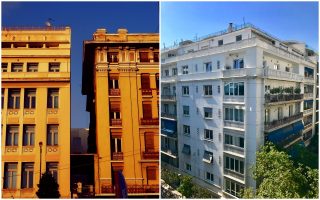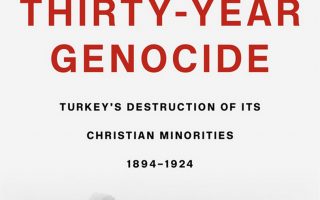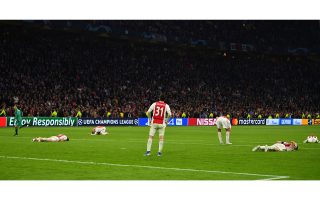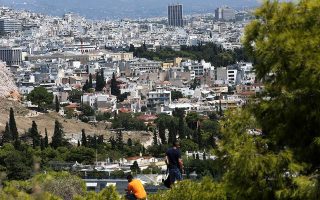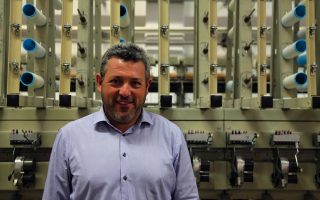‘The Last Monk of the Strofades,’ out now in English
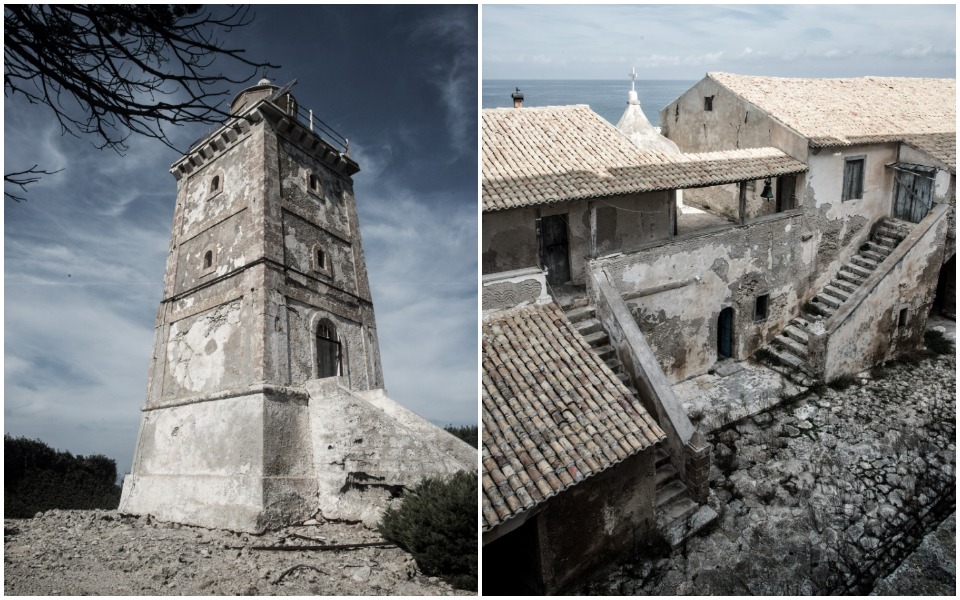
Following its publication in Greek last year, “The Last Monk of the Strofades: Memories from an Unknown Greek Island” is now available in English from Abbeville Press.
The book by US photographer Robert A. McCabe and Greek journalist Katerina Lymperopoulou is a unique record of the fortified monastery on Stamfani, the larger of the two Strofades islets off Zakynthos in the Ionian Sea. The 13th century monastery suffered serious damage during an earthquake in November of 1997 and was shut down after another temblor in October 2018.
For centuries, the monastery served as a refuge for seafarers and a target for pirates and Turkish raiders, while in its heyday it was home to some 40 farmer-monks. By 1976, however, only one monk remained, Father Gregory Kladis (1937-2017), who alone tended the monastery until 2014.
The book is intended to tell the world about the Monastery of Strofades and encourage its preservation. At its core are the words of the last monk himself, Father Gregory, who guides the reader around the historic monastery – its chapels, refectory, mills, bakehouse and living quarters – and the natural beauties of its island setting, as depicted in McCabe’s photographs.
The following essay was writen by Robert A. McCabe.
I first heard of the Strofades during the junta years, when reports circulated that the colonels were going to this small remote island group by helicopter for bird hunting. The islands, Stamfani and Arpia, sit in the southern Ionian Sea 27 miles south of Zakynthos. In 2003, traveling on a caique with Steve and June Tracy of the American School of Classical Studies, we stopped at Stamfani on the way from Pylos to Zakynthos.
What we discovered was nothing short of amazing. Here on an island shorter than the length of a typical airport runway was a huge, architecturally distinguished late Byzantine fortified monastery, founded by the Patriarchate of Constantinople. More remarkable was the fact the monastery was tended by a single monk, Father Gregory Kladis.
Father Gregory was very hospitable. He described his way of life, raising crops and goats and providing himself with sustenance. But it was clear that he led a tough life and when we saw that his supply of flour was worm infested we got worried. I took a few photographs but Father Gregory did not wish to be photographed.
There used to be a series, “The Most Unforgettable Character I’ve Met.” That was Father Gregory! We couldn’t get him out of our minds: a single monk-priest keeping the flame burning at an ancient remote Patriarchal monastery.
Over many centuries the monastery had flourished with dozens of monks, and active agriculture and fishing. It was here St Dionysius served as a monk and had asked to be buried. So it was an important religious site. But the monastery over the years was a constant victim of raids by pirates and Turks and thus developed strong fortifications. In 1717 there was a devastating, transformational Turkish raid. All the monks were massacred. So the seat of the monastery was temporarily moved to Zakynthos, along with the saint’s relics. And there it remains today, the temporary seat.
When I returned to Stamfani in 2014 in the hope of seeing Father Gregory, I learned that he had developed a heart condition and was living in Zakynthos. A caretaker removed the chains from the door of the monastery and let us in. We began systematically photographing the interior rooms. A few days later in Zakynthos we tried to contact Father Gregory, but were unsuccessful. But he and his island remained on our minds.
Fast forward to December 2016. I saw Katerina Lymperopoulou at a Christmas party and was introduced to her husband Dionysis – a Zakynthian I immediately surmised! On the spot I asked Katerina if she would like to work on a book with me about the Strofades and Father Gregory. She didn’t hesitate – and thus was born our project.
I knew Katerina was a talented journalist but I had no idea of her extraordinary resourcefulness. She immediately located Father Gregory and interviewed him with my photos of the monastery in hand. He sketched his life there and the various features and facilities of the monastery. Then Katerina tracked down and interviewed the colorful and articulate last lighthouse keeper of the Strofades, and even found the boatman who used to bring supplies to Father Gregory, weather permitting. She learned that sometimes there were periods of more than two months in the winter when the island could not be reached. There is no harbor, and because of its small size, no shelter. Rod Heikell, author of “Greek Waters Pilot” and the authority on navigation in Greece, says that being in the Strofades in a wind storm was like being in a washing machine.
Katerina learned that the island is a very important migratory bird resting place between Europe and Africa, for a multitude of species – thus the hunters. She also discovered the unusual geology of the island which allows the storage of rainwater in a vast underground natural reservoir, enabling agriculture. She learned about the unique and beautiful cedar forest that covers one end of the island. She found the expert on the monastery’s architecture, Stavros Mamaloukos, professor at the University of Patra, who generously allowed us to include plans of the monastery in our book. She uncovered the history of the magnificent lighthouse. And she became a confidante of his Eminence Chrysostomos Metropolitan Bishop of Dodona, a strong and unrelenting voice for the restoration of the monastery, not only physically, but also as a living monastery with monks.
The monastery had been badly damaged in an earthquake in 1997 and the constant theme of Father Gregory, Bishop Chrysostomos, Christina Merkouri (director of the Ephorate of Antiquities of West Attica, former director of the Ephorate of Antiquities of Zakynthos) and many of the other contributors to the book was the urgency of making permanent repairs.
Katerina and I made a final trip to Stamfani in October 2017 to complete the photography and to visit the lighthouse and forest. One year later, on the day our book was shipped from the printer to our publishers, October 26, 2018, a strong earthquake struck with its epicenter on the Strofades. The monastery was severely damaged. It represented a large exclamation point to our effort to highlight the importance of preserving such important landmarks in the Greek landscape. It led to a renewed push for restoration whose momentum we hope to sustain.
About the authors
Robert A. McCabe was born in Chicago in 1934. He started taking photographs in 1939 with a Kodak Baby Brownie given to him by his father, who published a tabloid newspaper in New York. His first visit to Greece was in 1954, equipped with a Rolleiflex with a 75 mm, f/3.5 lens and Plus-X film. In 1957, at the request of the National Geographic Magazine, he traveled widely in the Cyclades taking photographs. He has continued to photograph Greece. His 15 published books encompass Greece, Cuba, China, Antarctica, and Central Park in New York City. A new book, “Mykonos: Portrait of a Vanished Era,” has just been issued. Ongoing projects include: “The Greeks and Their Seas,” “Santorini: Portrait of a Vanished Era,” “Kasos 1965,” “A Portrait of Patmos” and “The Waterways of France.” He has made three visits to the Strofades, including a memorable visit with Father Gregory in 2005.
Katerina H. Lymperopoulou (b. 1968, Athens) has been working as a journalist for the last 30 years – following in the footsteps of her father, a Greek pentathlon and long jump champion and one of the pioneers of sports journalism in Greece, Hary A. Lymperopoulos. She graduated from the University of Athens’ School of Philosophy and also has a postgraduate degree from the same institution. She has worked for some of Greece’s largest newspapers (Apogevmatini, To Vima). Her marriage to the Zakynthian Dionysis I. Tsilimigras has connected her closely with the Ionian islands and the Strofades.
